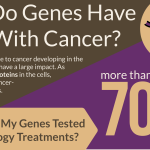What is Myelodysplastic Syndrome?
Each year about 10,000 Americans are diagnosed with myelodysplastic syndrome. As myelodysplastic syndrome usually affects older people, the number of people who develop this syndrome is likely to increase over the coming years. Keep reading to learn more about this disease, its symptoms and treatment options.
What is myelodysplastic syndrome?
Myelodysplastic syndrome (MDS) is a bone marrow disorder in which healthy blood cells cannot be produced. In a healthy person, bone marrow creates three different blood cells: red, white and platelets. It also makes undeveloped blood cells called stem cells that should fully develop into properly functioning red and white blood cells and platelets. For those with myelodysplastic syndrome, these stem cells do not properly develop or function. So, people with this disorder have a low blood cell count. MDS was sometimes referred to as pre-leukemia in the past. Now that doctors have learned more about MDS, it is considered to be a form of cancer.
What causes myelodysplastic syndrome?
It is unclear what causes myelodysplastic syndrome, but it is believed that some people have a higher risk of developing this disease. The development begins with a switch that is caused by an external factor. An unidentified external factor is called a primary MDS. One of the known factors of developing this disease is radiation or chemotherapy. Individuals who are receiving cancer treatment can develop MDS, even after the treatment has been completed. If a person develops MDS after cancer treatment, it is known as secondary MDS. When this type of syndrome develops, it usually is combined with chromosome abnormalities within the bone marrow. Another cause of MDS is exposure to chemicals, such as benzene. While the exact substance that causes the risk of developing MDS is unclear, those who work in specific occupations like painting, coal mining and embalming may have a higher chance of contracting it. Myelodysplastic syndrome is not something that is passed genetically, nor is it contagious.
Who is at risk for MDS?
Usually, those above the age of 65 are most at risk of developing this disease, although it can affect those who are younger. For unknown reasons, MDS is more commonly found in men than women. Those who are being treated with chemotherapy, or have previously been treated with chemotherapy or radiation, are also at risk. Several different drugs used for cancer treatments have been linked to developing this disease, such as procarbazine, ifosfamide, teniposide and doxorubicin. Those who smoke can be potentially more at risk for MDS, as it can cause several types of cancer, particularly cancer of the lungs. If someone has been exposed to radiation for long periods or has been exposed to certain toxic chemicals used in rubber and petroleum, there is also an increased risk.
What are the symptoms of MDS?
People at the beginning phase of MDS may not experience any symptoms. Blood tests can show a low red blood cell count and low white blood cell count and low platelet count. Typically, those who have blood cell counts below normal will feel symptoms. Many people experience anemia along with MDS, as anemia involves a consistently low hematocrit (measuring of the body’s red blood count). Those who are anemic will generally have fatigue, heart palpitations, pale skin and shortness of breath. Those with severe anemia may also experience chest pain. Low white cell counts, or neutropenia, are also an indication of MDS. Individuals with neutropenia may experience skin infections, sinus infections, lung infections or urinary tract infections. Often, these infections will cause a fever. Another symptom of MDS is low platelet count, or thrombocytopenia. Those with thrombocytopenia will bruise and bleed easily. Nosebleeds or bleeding of the gums is also common.
What are the treatment options for MDS?
Treatment options for MDS depend upon several factors such as the person’s age, health or the patient’s risk group. In many cases, a stem cell transplant is the most successful treatment. Sometimes, it is the only treatment available. This treatment requires having a matching donor, which is not always possible for those who are in poor health. If a stem cell transplant is not an option, then it is challenging to cure MDS. However, symptoms of the disease can be treated. For those with low blood cell counts, transfusions and blood cell growth factors can be helpful. Other treatments that include chemotherapy drugs can help increase blood cell counts and can increase life expectancy. Standard chemotherapy may also be an option for those with advanced MDS.
Myelodysplastic syndrome normally affects older people who have other contributing factors. But, that does not mean that younger people are not affected. While this disease is treatable, it can be difficult to treat and cure effectively.
If you have questions about MDS or its treatments, contact us today.





